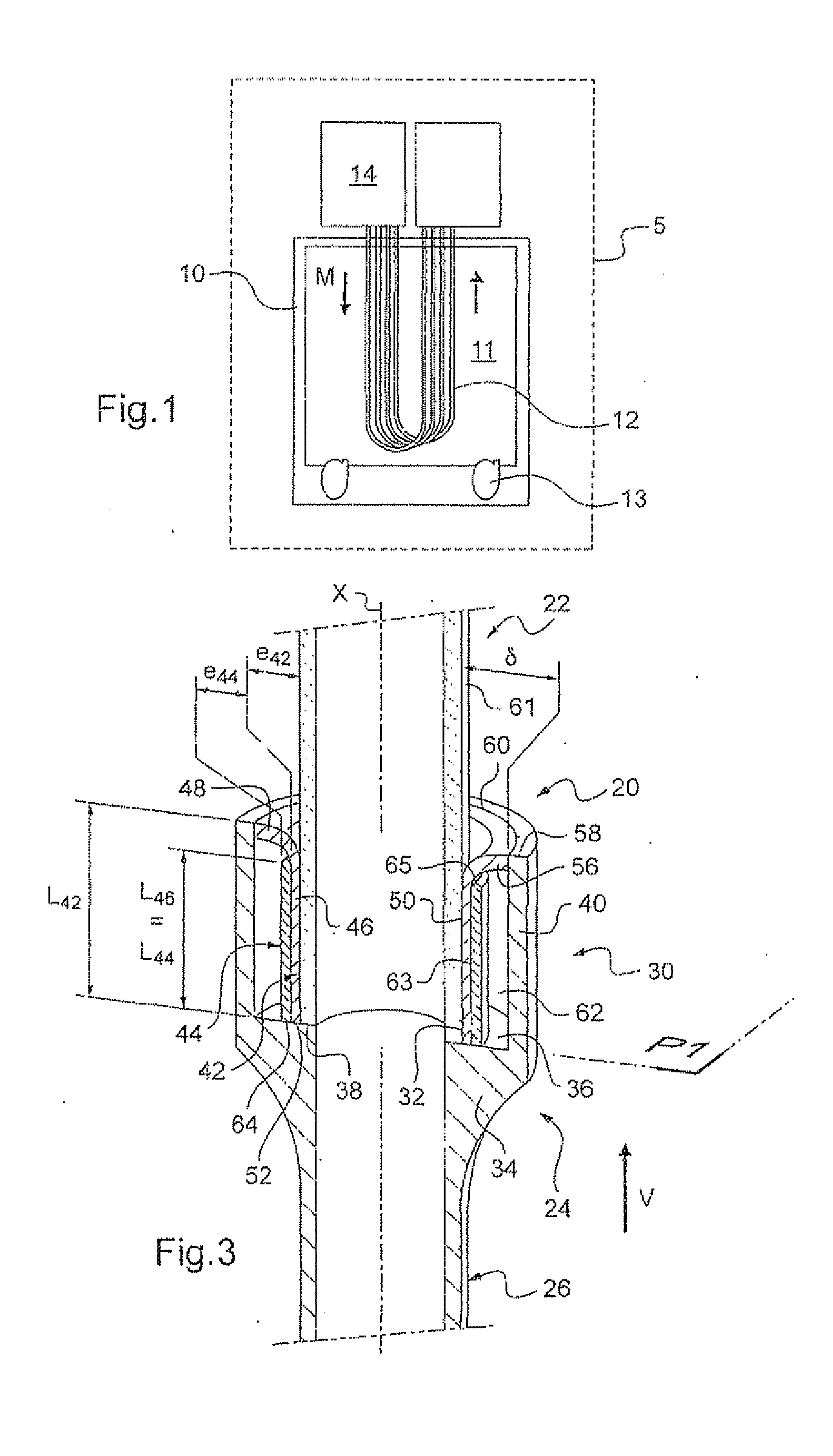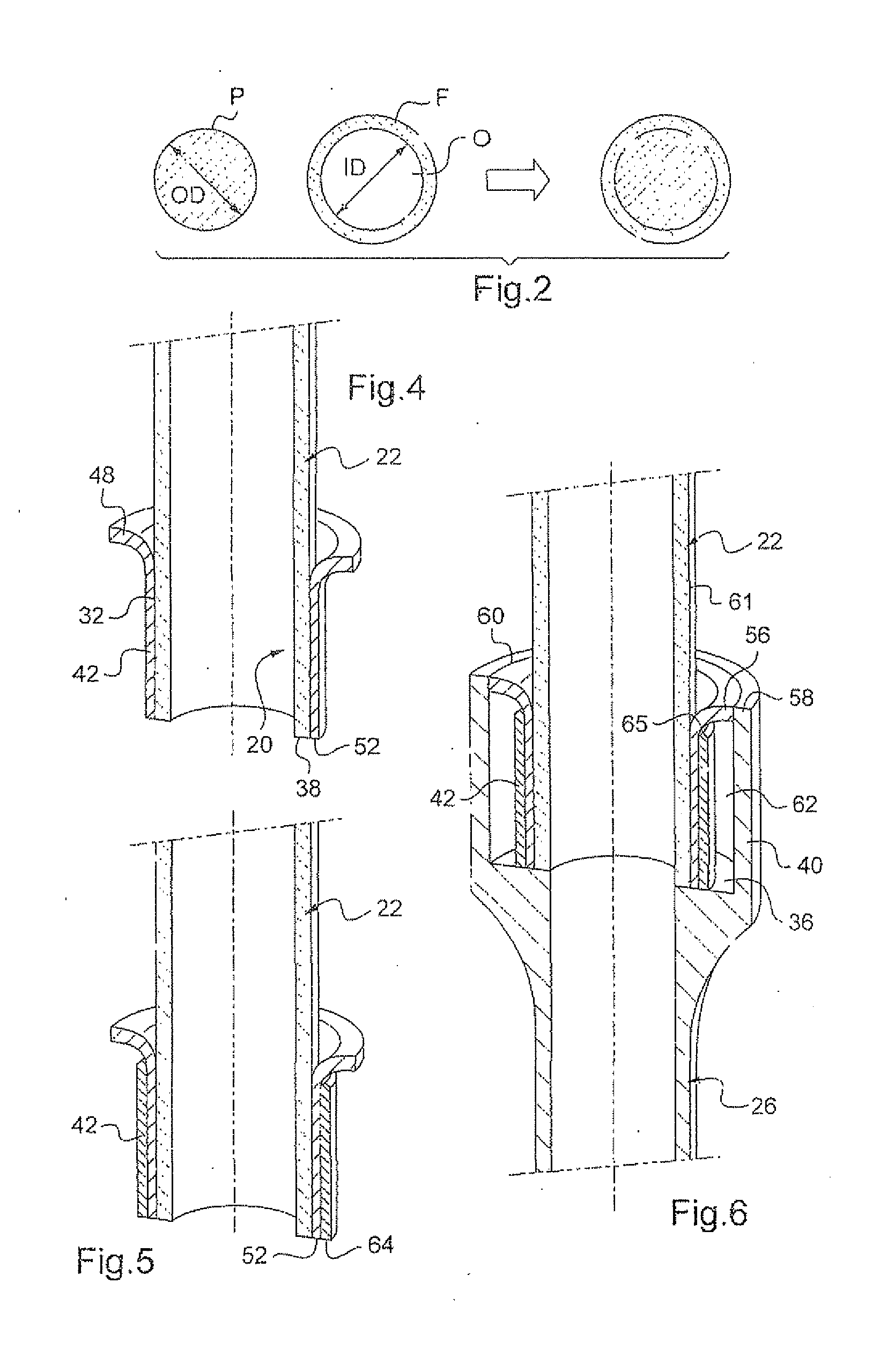Flush joint
a technology of flush joints and joints, applied in the field of flush joints, can solve the problems of inability to mechanically reliable connection, inability to fasten, and reduce the service life of the connection, so as to improve the leaktightness of the connection, improve the cohesion of the joined members, and increase the thermal expansion coefficient
- Summary
- Abstract
- Description
- Claims
- Application Information
AI Technical Summary
Benefits of technology
Problems solved by technology
Method used
Image
Examples
Embodiment Construction
[0264]FIG. 1 was described in the preamble of the description.
[0265]Shrink fitting is a technique for the axial fitting of an external part to an internal part which makes use of the difference in dilatometric behavior between these two parts. The external part is conventionally referred to as “shrink ring”. The internal part is referred to as “shrink fitted”.
[0266]More specifically, the shrink ring is made of a material exhibiting a greater thermal expansion coefficient than that of the internal part. As represented in FIG. 2, the shrink ring F exhibits an orifice O, delimited by an internal surface, the dimensions of which make it difficult, indeed even impossible, to fit it to the internal part P by hand or even, conventionally, using a press. When the shrink ring F is cylindrical with a circular transverse cross section, its internal diameter ID is thus less than the external diameter OD of the internal part P in the range of temperatures anticipated for the use of the joined co...
PUM
| Property | Measurement | Unit |
|---|---|---|
| temperature | aaaaa | aaaaa |
| porosity | aaaaa | aaaaa |
| thickness | aaaaa | aaaaa |
Abstract
Description
Claims
Application Information
 Login to View More
Login to View More - R&D
- Intellectual Property
- Life Sciences
- Materials
- Tech Scout
- Unparalleled Data Quality
- Higher Quality Content
- 60% Fewer Hallucinations
Browse by: Latest US Patents, China's latest patents, Technical Efficacy Thesaurus, Application Domain, Technology Topic, Popular Technical Reports.
© 2025 PatSnap. All rights reserved.Legal|Privacy policy|Modern Slavery Act Transparency Statement|Sitemap|About US| Contact US: help@patsnap.com



